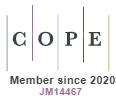Overview of public policies and strategies for deployment of carbon capture and storage and reflections for Brazil
DOI:
https://doi.org/10.5585/geas.v10i1.19305Keywords:
Carbon capture and storage, Public policy, Carbon pricing, Green bonds, Climate change.Abstract
Objective: to examine which public policies and financing strategies can stimulate the mitigation of GHG emissions through CCS and to reflect on the use of this technology in Brazil.
Methodology: The research approach was qualitative, exploratory and descriptive, based on documental and bibliographic analysis on the subject.
Relevance: Carbon Capture and Storage (CCS) is an emerging technology to reduce greenhouse gases (GHGs) in the atmosphere and thus mitigate climate change. There is a need for government planning to meet Brazil's commitments under the Paris Agreement, in which context the use of CCS can be assessed as a strategy for the country.
Results: The results have shown that the viability of CCS projects is often linked to a strong public policy to support the technology and that it will possibly be dependent on the political will of the government to implement them on a large scale.
Contributions: Analysis of possible approaches to CCS funding in Brazil, also examining possible associations between this technology and some Brazilian sectors, such as oil and gas, bioenergy and cement.
Conclusion: In Brazil, although currently CCS is exclusively associated with the oil and gas sector, this technology can be considered for other sectors as a form of compliance of Brazilian NDCs.
Downloads
References
Acordo de Paris (2015). UN Treaty. United Nations. Retrieved 17 November 2020, from https://unfccc.int/sites/default/files/english_paris_agreement.pdf.
Asia Pacific Economic Cooperation – APEC. (2005). Building Capacity for CO2 Capture and Storage in the APEC Region - A Training Manual for Policy Makers and Practitioners. APEC Energy Working Group Project EWG 03/2004T. Prepared by Delphi Group and Alberta Research Council, March 2005.
Bachelet, M. J.; Becchetti, L.; Manfredonia, S. (2019). The green bonds premium puzzle: The role of issuer characteristics and third-party verification. Sustainability, 11(4), 1098.
Beck, B., Cunha, P., Ketzer, M., Machado, H., Rocha, P. S., Zancan, F., ... & Pinheiro, D. Z. (2011). The current status of CCS development in Brazil. Energy Procedia, 4, 6148-6151.
Beder, S. (2014). Lobbying, greenwash and deliberate confusion: how vested interests undermine climate change. In M. C-T. Huang and R. R-C. Huang (Eds.), Green Thoughts and Environmental Politics: Green Trends and Environmental Politics (pp. 297-328). Taipei, Taiwan: Asia-seok Digital Technology.
Brasil (2016). Intended Nationally Determined Contribution. https://www4.unfccc.int/sites/ndcstaging/PublishedDocuments/Brazil%20First/BRAZIL%20iNDC%20english%20FINAL.pdf.
Brasil (2020). Brazil’s Nationally Determined Contribution (NDC). https://www4.unfccc.int/sites/ndcstaging/PublishedDocuments/Brazil%20First/Brazil%20First%20NDC%20(Updated%20submission).pdf
British Petroleum – BP (2020). BP statistical review of world energy 2020. London, 69th edition, 2020. https://www.bp.com/content/dam/bp/business-sites/en/global/corporate/pdfs/energy-economics/statistical-review/bp-stats-review-2020-full-report.pdf. (accessed 08 August 2020).
CBI (2020a). Climate Bonds Taxonomy. https://www.climatebonds.net/files/files/CBI_Taxonomy_Tables_January_20.pdf.
CBI (2020b). Climate Bonds Initiative Green Bond Database Methodology. https://www.climatebonds.net/files/files/Climate%20Bonds%20Initiative%20Green%20Bond%20Database%20Methodology_Sept2020%281%29.pdf.
CBI (2019). Growing green bond markets: The development of taxonomies to identify green assets. https://www.climatebonds.net/files/reports/policy_taxonomy_briefing_conference.pdf
CDP (2017). The Carbon Majors Database: CDP Carbon Majors Report 2017. https://6fefcbb86e61af1b2fc4-c70d8ead6ced550b4d987d7c03fcdd1d.ssl.cf3.rackcdn.com/cms/reports/documents/000/002/327/original/Carbon-Majors-Report-2017.pdf?1501833772
Climate Watch (2020). GHG emissions. https://www.climatewatchdata.org/ghg-emissions.
Cox, E.; Edwards, N. R. (2019). Beyond carbon pricing: policy levers for negative emissions technologies. Climate policy, 19 (9), 1144-1156.
EPE (2020). Balanço Energético Nacional – Relatório Síntese/Ano base 2019. Rio de Janeiro: MME/EPE.
Esposito, R.; Kuuskraa, V. A.; Rossman, C.; Corser, M. M. (2019). Reconsidering CCS in the US fossil-fuel fired electricity industry under section 45Q tax credits. Greenhouse Gas Sci Technol. 0,1–14. DOI: 10.1002/ghg.1925
European Commission (2020). Taxonomy: Final report of the technical expert group on sustainable finance. Technical report, European Commission.
FGV EAESP. (2020, 17 set.) Evento Anual do Programa Brasileiro GHG Protocol. 17 set. 2020. https://eaesp.fgv.br/sites/eaesp.fgv.br/files/u641/apresentacao_ea_ghg_2020.pdf.
Giannaris, S.; Bruce, C.; Jacobs, B.; Srisang, W.; Janowczyk D. (2020) Implementing a second generation CCS facility on a coal fired power station – results of a feasibility study to retrofit SaskPower's Shand power station with CCS. Greenhouse Gas Sci Technol. 10, 506–518. DOI: 10.1002/ghg.1989.
Global CCS Institute (2019). The Global Status of CCS: 2019. Australia.
Guigon, P. (2010). Voluntary Carbon Markets: How can they Serve Climate Policies?. OECD Environment Working Papers, 19, OECD Publishing, Paris, https://doi.org/10.1787/5km975th0z6h-en.
Hasan, M. F.; First, E. L.ç Boukouvala, F.; Floudas, C. A. (2015). A multi-scale framework for CO2 capture, utilization, and sequestration: CCUS and CCU. Computers & Chemical Engineering, 81, 2-21. https://doi.org/10.1016/j.compchemeng.2015.04.034
Heede, R. (2019) Carbon Majors: Update of Top Twenty companies 1965-2017. Press release. Climate Accountability Institute. https://climateaccountability.org/pdf/CAI%20PressRelease%20Top20%20Oct19.pdf.
Hirsch, E.; Foust, T. (2020) Policies and Programs Available in the United States in Support of Carbon Capture and Utilization. Energy Law Journal, 41 (1), 91-126.
ICMA. (2018). Green Bonds Principles, Voluntary Process Guidelines for Issuing Green Bonds June - 2018. https://www.icmagroup.org/assets/documents/Regulatory/Green-Bonds/Green-Bonds-Principles-June-2018-270520.pdf.
ICMA (2020a), Guidance Handbook - April 2020. https://www.icmagroup.org/assets/documents/Regulatory/Green-Bonds/Guidance-Handbook-April-2020-200820.pdf.
ICMA. (2020b). Guidelines for Green, Social and Sustainability Bonds External Reviews Principles June 2020 https://www.icmagroup.org/assets/documents/Regulatory/Green-Bonds/June-2020/External-Review-GuidelinesJune-2020-090620.pdf.
IEA (2020), Energy Technology Perspectives 2020, IEA, Paris https://www.iea.org/reports/energy-technology-perspectives-2020.
IPCC 2006, (2006). IPCC Guidelines for National Greenhouse Gas Inventories, Prepared by the National Greenhouse Gas Inventories Programme, Eggleston H.S., Buendia L., Miwa K., Ngara T. and Tanabe K. (eds). Published: IGES, Japan.
Intergovernmental Panel On Climate Change – IPCC (2005). Special Report on Carbon Dioxide Capture and Storage. Cambridge: Cambridge University Press, Cambridge, 2005. Preparado pelo Grupo de Trabalho III do IPCC.
Intergovernmental Panel On Climate Change – IPCC. (2018). Summary for Policymakers. In: Global Warming of 1.5°C. An IPCC Special Report on the impacts of global warming of 1.5°C above pre-industrial levels and related global greenhouse gas emission pathways, in the context of strengthening the global response to the threat of climate change, sustainable development, and efforts to eradicate poverty [Masson-Delmotte, V., P. Zhai, H.-O. Pörtner, D. Roberts, J. Skea, P.R. Shukla, A. Pirani, W. Moufouma-Okia, C. Péan, R. Pidcock, S.
Kerdan, I. G.; Giorola, Sara; Hawkes, A. (2019). A novel energy systems model to explore the role of land use and reforestation in achieving carbon mitigation targets: A Brazil case study. Journal of Cleaner Production, 232, 796-821.
Lino, U.R.A. (2005) Case History of Breaking a Paradigm: Improvement of an Immiscible Gas-Injection Project in Buracica Field by Water Injection at the Gas/Oil Contact. In: SPE Latin American and Caribbean Petroleum Engineering Conference., 2005, Rio de Janeiro. Anais eletrônicos... Rio de Janeiro: SPE.
Longa, F. D.; Detz, R.; Zwann, B. (2020) Integrated assessment projections for the impact of innovation on CCS deployment in Europe. International Journal of Greenhouse Gas Control, 103. https://doi.org/10.1016/j.ijggc.2020.103133
Meadowcroft, J. R.; Langhelle, O. (2009). Caching the carbon. Edward Elgar Publishing.
Moreira J. R. et al. (2016). BECCS potential in Brazil: Achieving negative emissions in ethanol and electricity production based on sugar cane bagasse and other residues. Applied Energy, 179, 55-63. https://doi.org/10.1016/j.apenergy.2016.06.044
Netto, A. L. A.; Câmara, G.; Rocha, E.; Silva, A. L.; Andrade, J. C. S.; Peyerl, D.; Rocha, P. (2020). A first look at social factors driving CCS perception in Brazil: A case study in the Recôncavo Basin. International Journal of Greenhouse Gas Control, 98, 103053.
Ogihara, A. (2018). Mapping the Necessary Policy Instruments to Unlock the Potentials of Private Finance for Carbon Capture and Storage Technologies. In: Financing for low-carbon energy transition: Unlocking the potential of private capital. Editors: Anbumozhi, Venkatachalam; Kalirajan, Kaliappa; Kimura, Fukkunari. Springer. DOI: https://doi.org/10.1007/978-981-10-8582-6
Oil and Gas Climate Initiative – OGCI. (2019). Scaling up action: aiming for net zero emissions. <https://oilandgasclimateinitiative.com/wp-content/uploads/2019/10/OGCI-Annual-Report-2019.pdf>.
Petrobras. (2020). Relatório de sustentabilidade 2019. https://sustentabilidade.petrobras.com.br/src/assets/pdf/Relatorio-Sustentabilidade.pdf.
Rogelj, J., D. Shindell, K. Jiang, S. Fifita, P. Forster, V. Ginzburg, C. Handa, H. Kheshgi, S. Kobayashi, E. Kriegler, L. Mundaca, R. Séférian, and M.V.Vilariño (2018). Mitigation Pathways Compatible with 1.5°C in the Context of Sustainable Development. In: Global Warming of 1.5°C. An IPCC Special Report on the impacts of global warming of 1.5°C above pre-industrial levels and related global greenhouse gas emission pathways, in the context of strengthening the global response to the threat of climate change, sustainable development, and efforts to eradicate poverty [Masson-Delmotte, V., P. Zhai, H.-O. Pörtner, D. Roberts, J. Skea, P.R. Shukla, A. Pirani, W. Moufouma-Okia, C. Péan, R. Pidcock, S. Connors, J.B.R. Matthews, Y. Chen, X. Zhou, M.I. Gomis, E. Lonnoy, T. Maycock, M. Tignor, and T. Waterfield (eds.)]. In Press
Quarton, C. J.; Samsatli, S. (2020) The value of hydrogen and carbon capture, storage and utilisation in decarbonising energy: Insights from integrated value chain optimization. Applied Energy, 257. https://doi.org/10.1016/j.apenergy.2019.113936
SEEG (2020). Total emissions. https://plataforma.seeg.eco.br/total_emission.
Souza, A. L.; Andrade, J. C; Alvarez, G.; Santos, N. (2013) Financiamento de carbono no mundo e no brasil: um estudo sobre financiadores, fundos de investimentos e índices de sustentabilidade ambiental em prol de uma economia de baixo carbono. GEAS, 2(2), 177-207.
Stuenkel, O. (2020) International pressure can save the Amazon from Bolsonaro. Financial times. https://www.ft.com/content/0f97c674-b7aa-4ec4-8fa1-88b810bc3dc7.
United Nations Environment Programme - UNEP. (2017). The Emissions Gap Report 2017.
United Nations Development Programme – UNDP (2016). Carbon Markets. https://www.undp.org/content/dam/sdfinance/doc/Carbon%20Markets%20_%20UNDP.pdf
U.S. Department of Energy (2019). Internal Revenue code tax fact sheet. https://www.energy.gov/sites/prod/files/2019/10/f67/Internal%20Revenue%20Code%20Tax%20Fact%20Sheet.pdf.
Vale. Relatório de sustentabilidade 2019 (2020). http://www.vale.com/PT/investors/information-market/annual-reports/sustainability-reports/Sustentabilidade/Relatorio_sustentabilidade_vale_2019_alta_pt.pdf.
Votorantim Cimentos (2020). Relatório integrado 2019. <https://www.votorantimcimentos.com.br/download/br/integrated-report-2019.pdf>.
Valentine, S. V.; Brown, M. A.; Sovacool, B. K. (2019). Empowering the great energy transition. New York: Columbia University Press.
Zhang, Z. et al. (2020). Recent advances in carbon dioxide utilization. Renewable and Sustainable Energy Reviews, 125, 109799. https://doi.org/10.1016/j.rser.2020.109799
Downloads
Published
How to Cite
Issue
Section
License
Copyright (c) 2021 Journal of Environmental Management & Sustainability

This work is licensed under a Creative Commons Attribution-NonCommercial-ShareAlike 4.0 International License.









